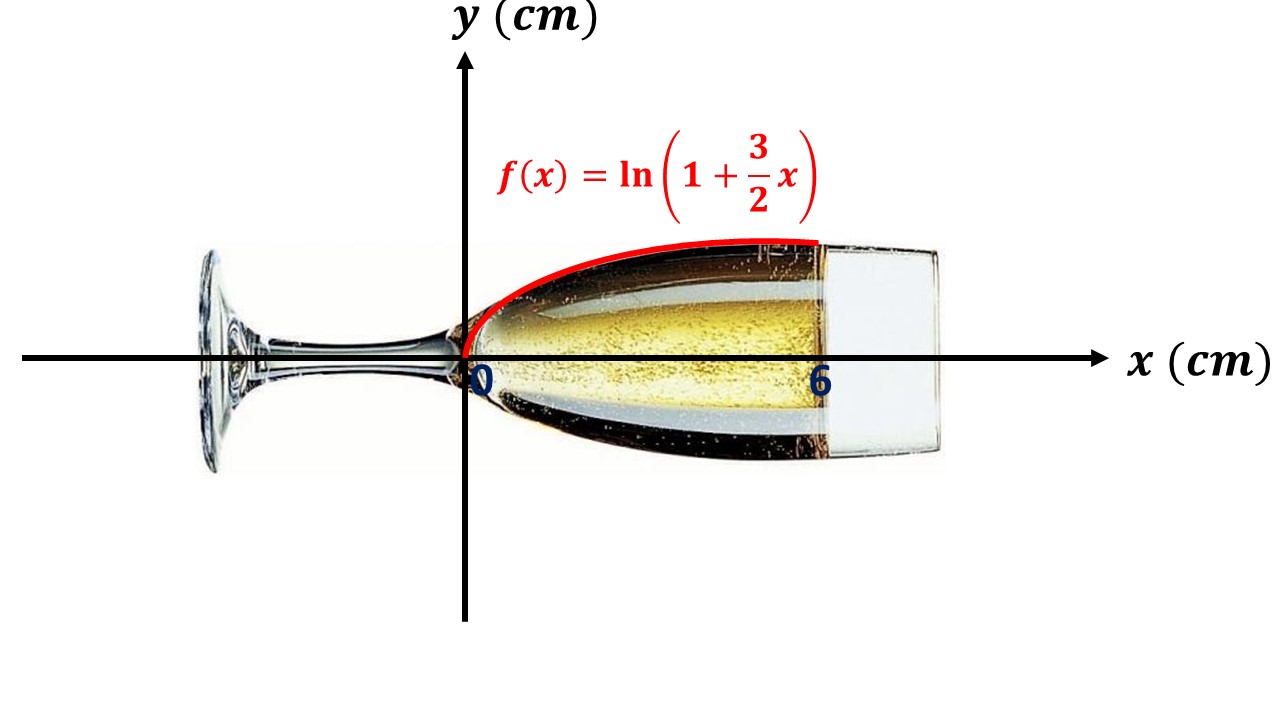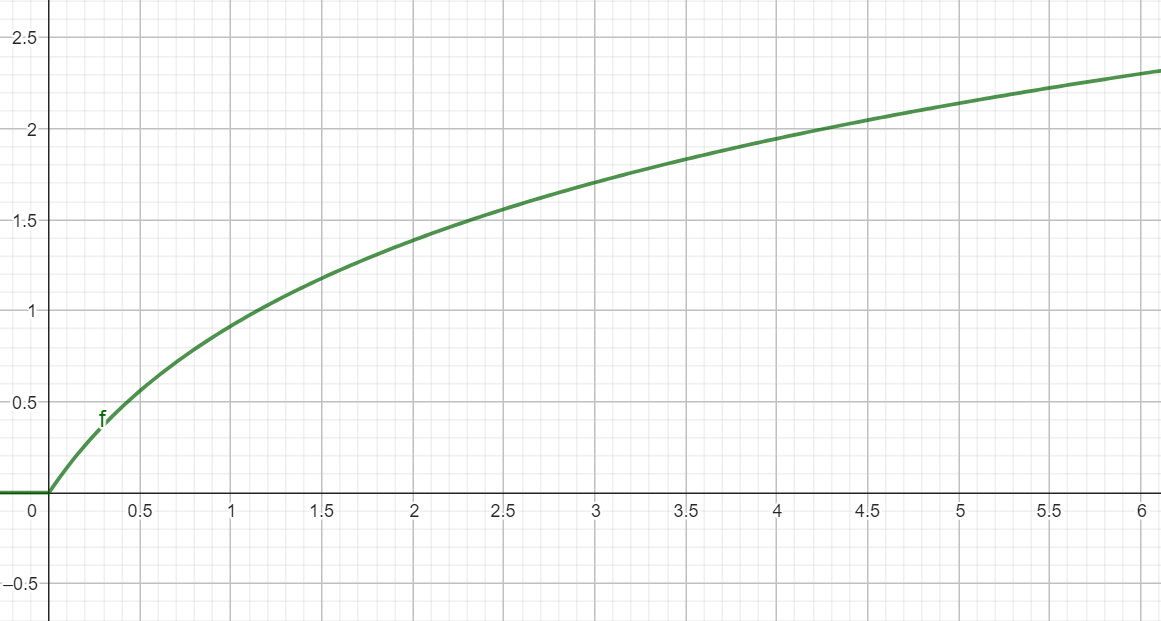La valeur exacte, en
cm3 de
V est donnée par :
V=π∫06f2(x)dx⟺V=π∫06ln2(1+23x)dxQue nous allons réécrire comme :
V=π∫061×ln2(1+23x)dx⟺πV=∫061×ln2(1+23x)dxEn utilisant la technique de l'intégration par parties, on obtient :
πV=[xln2(1+23x)]06−∫06x×2×1+23x23×ln(1+23x)dxSoit encore :
πV=6ln2(1+23×6)−∫061+23x3xln(1+23x)dxCe qui nous donne :
πV=6ln2(10)−2∫062+3x3x×ln(1+23x)dxÉcrivons donc :
2πV=3ln2(10)−∫063x+23x+2−2×ln(1+23x)dxOn obtient alors :
2πV=3ln2(10)−∫06(3x+23x+2−3x+22)×ln(1+23x)dxSoit encore :
2πV=3ln2(10)−∫06(1−3x+22)×ln(1+23x)dxCe qui nous donne :
2πV=3ln2(10)−∫061×ln(1+23x)dx+2∫063x+21×ln(1+23x)dxD'où :
2πV=3ln2(10)−∫061×ln(1+23x)dx+∫061+23x1×ln(1+23x)dxQui va encore s'écrire :
2πV=3ln2(10)−∫061×ln(1+23x)dx+32∫061+23x23×ln(1+23x)dxEt encore :
2πV=3ln2(10)−∫061×ln(1+23x)dx+31∫062×1+23x23×ln(1+23x)dxLa seconde intégrale s'intègre directement :
2πV=3ln2(10)−∫061×ln(1+23x)dx+31[ln2(1+23x)]06Comme
ln(1)=0, on en déduit que :
2πV=3ln2(10)−∫061×ln(1+23x)dx+31ln2(1+23×6)Soit encore :
2πV=3ln2(10)−∫061×ln(1+23x)dx+31ln2(10)D'où :
2πV=310ln2(10)−∫061×ln(1+23x)dxPuis, en effectuant une nouvelle intégration par parties, on peut écrire que :
2πV=310ln2(10)−[xln(1+23x)]06+∫06x×1+23x23dxSoit :
2πV=310ln2(10)−6ln(1+23×6)+∫06x×22+23x23dxQui prend la forme suivante :
2πV=310ln2(10)−6ln(10)+∫062+3x3xdxDonnons lui la forme suivante :
2πV=310ln2(10)−6ln(10)+∫062+3x2+3x−2dxPour décomposer ainsi :
2πV=310ln2(10)−6ln(10)+∫06(1−2+3x2)dxCe qui nous donne :
2πV=310ln2(10)−6ln(10)+∫061dx−∫062+3x2dxSoit encore :
2πV=310ln2(10)−6ln(10)+[x]06−∫061+23x1dxOn a donc :
2πV=310ln2(10)−6ln(10)+6−32∫061+23x23dxD'où :
2πV=310ln2(10)−6ln(10)+6−32[ln(1+23x)]06On trouve donc :
2πV=310ln2(10)−6ln(10)+6−32ln(1+23×6)Soit :
2πV=310ln2(10)−6ln(10)+6−32ln(10)D'où :
2πV=310ln2(10)−320ln(10)+6En factorisant par
310ln2(10), on trouve que :
2πV=310ln(10)(ln(10)−2)+6Ou encore en factorisant par
2 :
2πV=2(35ln(10)(ln(10)−2)+3)Finalement, on trouve que :
V=4π(35ln(10)(ln(10)−2)+3)cm3


